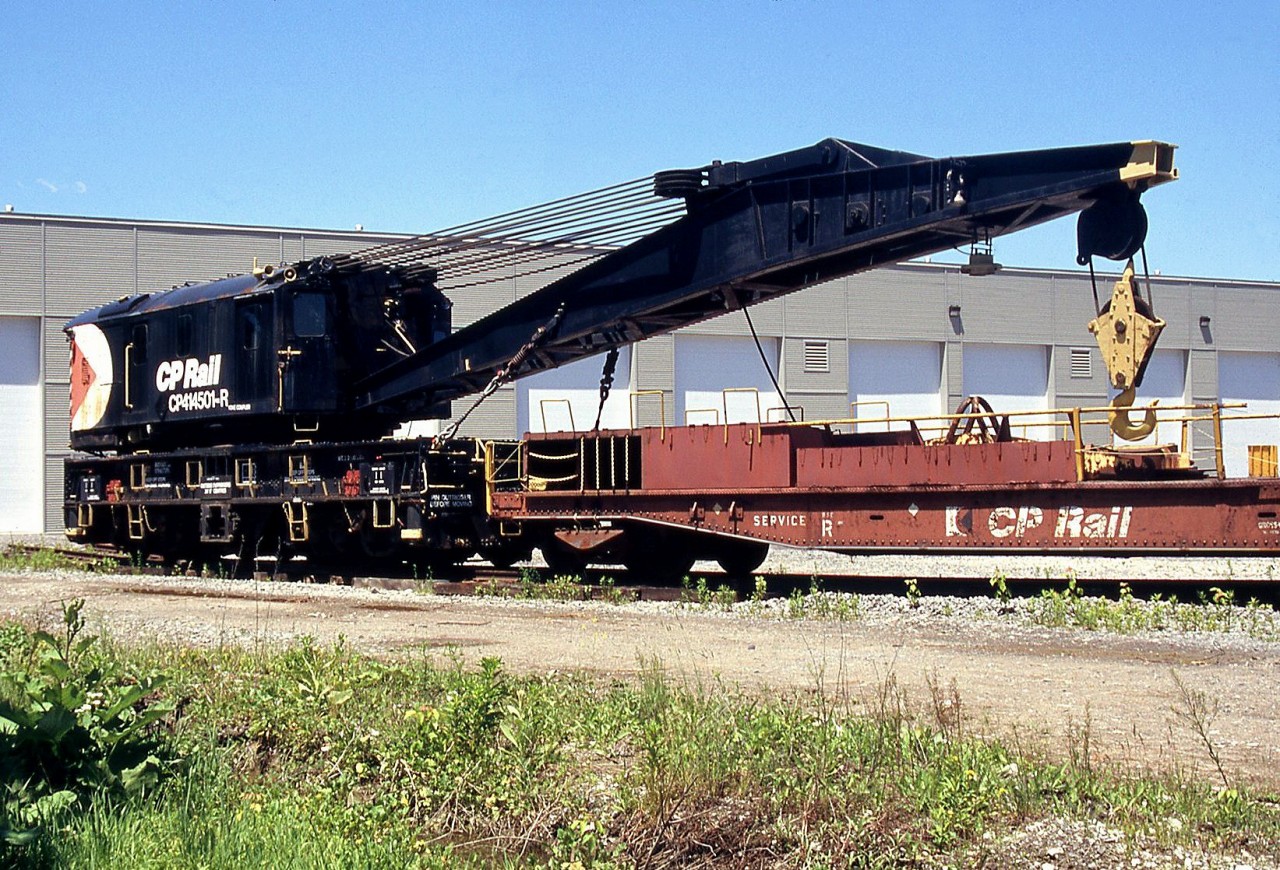|
Caption: CP Rail "Big Hook" 414501, a 250-ton Industrial Brownhoist wrecking crane built in 1946 (originally steam powered, converted to diesel), sits at the Canadian Railway Museum (Exporail) with its boom car 412333.
Before the days of on-demand cleanup contractors like Hulcher and their fleets of side-boom Cat tractors, railways maintained their own wreck auxiliary trains at major divisions, that included a crane or two. Unlike the common small diesel-powered cranes commonly used for maintenance of way and track duties, wrecking cranes were intended for lifting and clearing heavy steam and later diesel locomotives to get the railway's line open again. Crane sizes varied: steam-powered-100 ton cranes built in the 1910/1920's were once common at smaller points during the steam era, and CP also rostered nearly a dozen large 200-ton cranes, but major terminals like Toronto would often warrant the biggest of the big: the 250-ton crane, of which CP owned about half a dozen in the 414500/414600 series.
Over time as contracting services became more popular, railways eliminated their auxiliaries and disposed of (scrapped) their large wrecking cranes, although CP does still maintain some out west in places like Golden and Revelstoke.
Based out of Toronto and the eastern region for much of its life, 414501 was put up for sale by CP in 2000, and acquired by Exporail in 2002.
|


